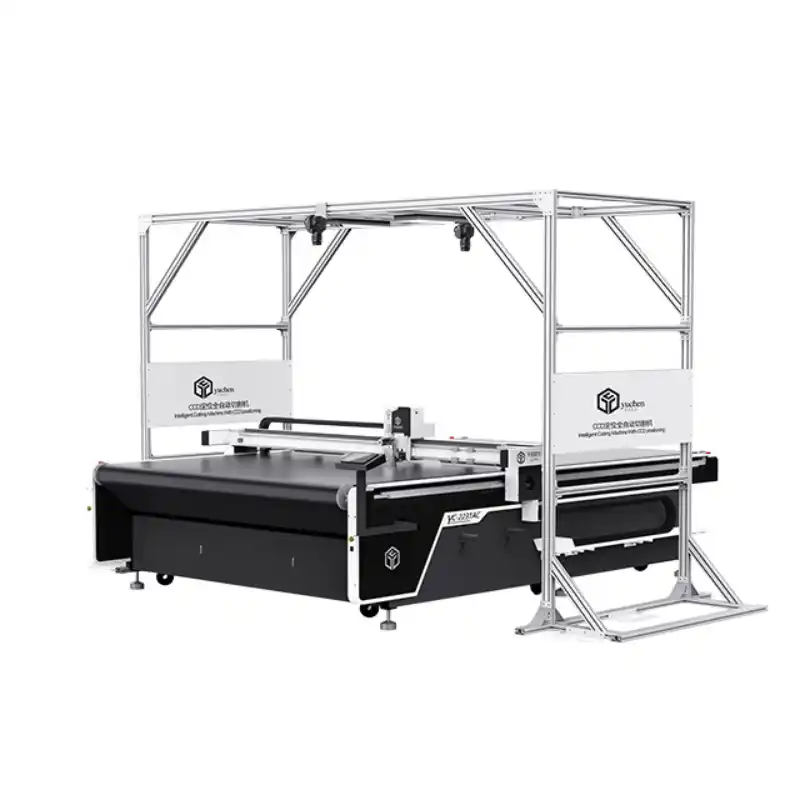The handling of fabric stretching or distortion during cutting is a crucial aspect of T-shirt cutting machines to ensure accurate and precise cutting results.
Here’s how T-shirt cutting machines typically handle fabric stretching or distortion:
- Advanced Fabric Control Systems: Many modern T-shirt cutting machines are equipped with advanced fabric control systems that minimize stretching or distortion during cutting. These systems may include features such as tension control mechanisms, adjustable feeding speeds, and precise fabric handling mechanisms to maintain fabric integrity throughout the cutting process.
- Gripper Systems: T-shirt cutting machines often use gripper systems or vacuum beds to securely hold the fabric in place during cutting. These systems prevent excessive movement or shifting of the fabric, reducing the risk of stretching or distortion. Gripper systems can be adjustable to accommodate different fabric types and thicknesses while maintaining a firm grip.
- Optimized Cutting Paths: T-shirt cutting machines employ optimized cutting paths and patterns to minimize fabric movement and distortion. By strategically planning the cutting path, the machine can minimize the amount of fabric manipulation required, reducing the risk of stretching or distortion along the cut edges.
- Precise Cutting Mechanisms: The cutting mechanisms of T-shirt cutting machines are designed to deliver precise and clean cuts without causing excessive tension or deformation to the fabric. Various cutting methods, such as rotary blades, laser cutting, or ultrasonic cutting, may be used depending on the machine’s capabilities and the fabric type. These cutting mechanisms are carefully calibrated to ensure minimal fabric distortion during the cutting process.
- Real-Time Monitoring and Adjustment: Some T-shirt cutting machines feature real-time monitoring and adjustment capabilities to detect and compensate for fabric stretching or distortion during cutting. Sensors and feedback systems may be integrated into the machine to monitor fabric tension, alignment, and movement, allowing the machine to make necessary adjustments to maintain cutting accuracy.
- Pre-Treatment or Stabilization: In some cases, pre-treatment or stabilization techniques may be employed to minimize fabric stretching or distortion before cutting. This may involve processes such as pre-shrinking the fabric, applying stabilizing agents, or using tensioning devices to condition the fabric for cutting.
- Operator Training and Skill: Proper operator training and skill play a significant role in minimizing fabric stretching or distortion during cutting. Operators need to understand the machine’s capabilities, fabric characteristics, and cutting techniques to optimize cutting performance and minimize fabric handling errors that could lead to stretching or distortion.
By incorporating these techniques and features, T-shirt cutting machines can effectively handle fabric stretching or distortion during cutting, ensuring accurate and high-quality results for T-shirt production.
